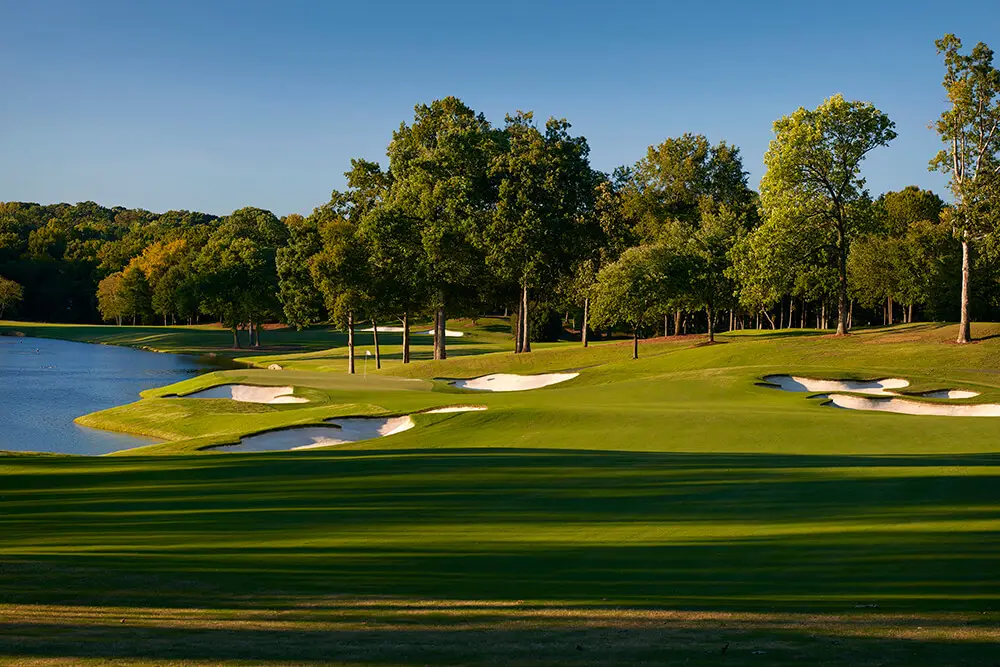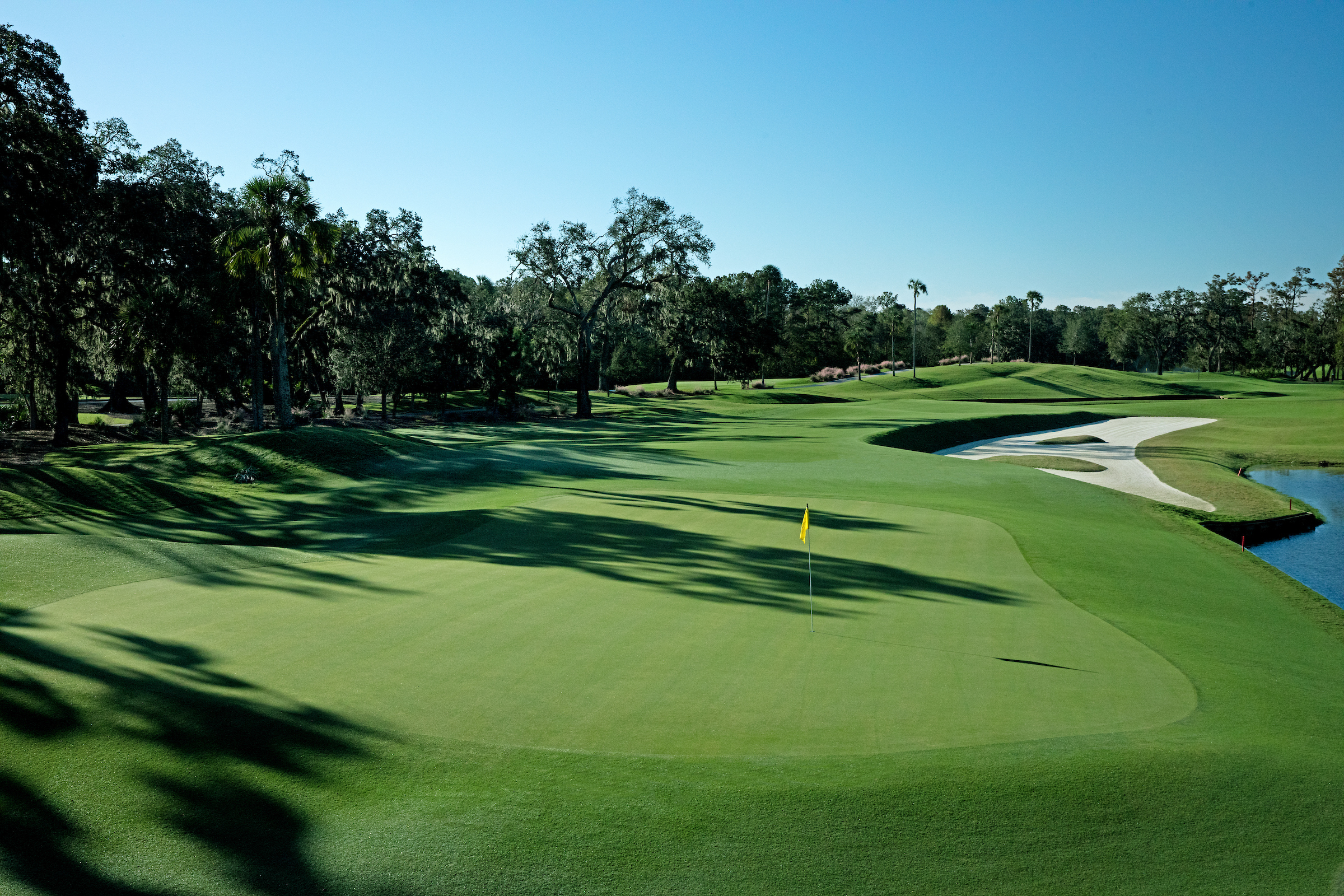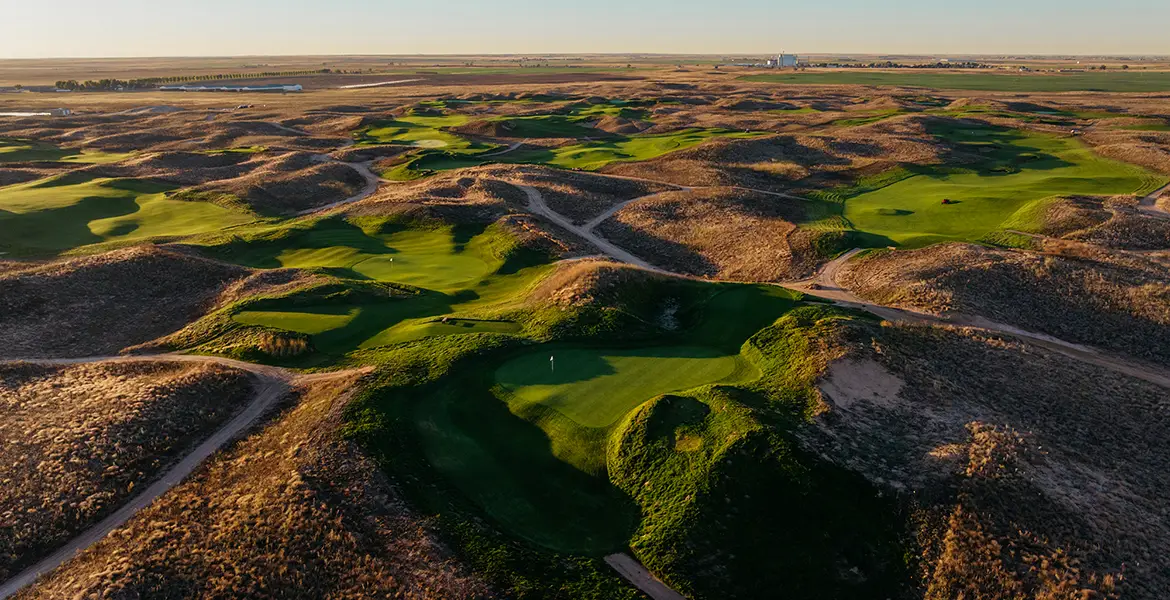During the Travelers Championship’s media day at TPC River Highlands earlier this year, World No. 1 Scottie Scheffler called out the course’s 15th hole, praising the short par four and using it as an example for how golf courses can challenge the world’s best without adding length. “It’s a good example of not having to build golf courses really long to make them interesting,” Scheffler said. “You’ve got to hit the ball really well [to some very small areas] to get it in position … but if you hit a good shot where you’re looking, you’ll be rewarded for it. I think it’s one of the best holes we play on Tour in terms of the risk/reward.”
When the PGA Tour rolled into town a couple months later, I spoke to as many players on the range as I could, picking their brains about that hole and the other notable drivable par fours that they play each year on Tour. While a few favorites emerged, the overwhelming takeaway was that the best drivable holes are the ones where almost everyone is going for it all the time. “From a design standpoint,” says Xander Schauffele, “it’s bad to have a drivable par four where everyone lays up.”
Here, we present the drivable holes on Tour that the players most love to play.
TPC River Highlands (Cromwell, Conn.)—Hole 15
On some drivable par fours—the 10th at Riviera Country Club, for example—golfers can be penalized for a good shot that takes a bad bounce. That’s not the case on the 15th hole at TPC River Highlands. “If you hit a good quality shot, you can tell as soon as you hit it that your ball will end up on the green,” Cam Davis says. “That’s a nice reward on a very tricky hole where if you miss the green, there’s a lot of trouble.”
Eric Cole takes a closer look at the hole and specifically highlights the green as its best attribute. “There are so many great pin locations,” Cole says. “You could short-side yourself and sometimes still have a shot; and sometimes, short-sided, you could have a real big problem. It’s just a great design.”

No matter where the hole is cut on this hole, Ludvig Aberg likes his chances of going for it. “Even if I tug it in the water and I’m dropping, I can still get up and down for par,” he explains. “Some of those pin locations are pretty tricky with a wedge, so you’re not guaranteed a 10-footer for birdie [if you lay up].”
The hole’s short length—most players are hitting 3-woods or even less club if the wind is at their backs—also contributes to its charm. “You’re almost never hitting driver, yet it’s really hard to get it in the right spot,” Jordan Spieth acknowledges. “You actually think that you should hit it on the green, but you could very much end up with bogey if you’re just a little bit off. In reality, it should be more of a position play than anything else, but it makes you want to press more than you should.”
Riviera Country Club (Pacific Palisades, Calif.)—Hole 10
An obvious choice for many on the Tour, the 10th at Riviera is probably the first drivable par four that comes to most players’ minds. “It’s right in front of you,” says Bud Cauley. “You know where you have to hit the ball, and if you hit it there, the hole can be very simple. But if you get out of position, it can be an absolute nightmare.”
Others have slightly different opinions. “As amazing as that hole is—because you can make any kind of number—you’re actually not planning to hit it on the green,” says Tommy Fleetwood. “With a bucket of balls,” adds Jordan Spieth, “you might get a couple on the green.”

But as Rickie Fowler points out, hitting your drive onto the putting surface can be a detriment due to how severely pitched the middle section of the green is. “If you hit it on the front, you can’t hit a putt to the back [and hold the green] because of how much pitch there is in the middle,” he says. For that reason, Fowler believes it’s time for that green to be softened. “If you have a ball on the green, there should be a way for you to get the ball to the hole wherever it’s at.”
TPC Scottsdale (Scottsdale, Ariz.)—Hole 17
The raucous amphitheater that has become the 16th hole at TPC Scottsdale means the drivable par-four 17th always flies a bit under the radar. Nevertheless, the players love it. “Most guys can get there, because over that bunker [in the center of the fairway], it slopes straight downhill with water on the left,” Gary Woodland says. “Depending on the wind, I’ve got to decide if it’s 3-wood or driver, but I’m always going for it. It’s a big risk/reward, and it’s a big swing of momentum coming down the stretch, especially so close to the finish.”
Ryan Fox concurs. “You put the pin in the back or hard up against the left side, and it can be a 3 or a 6 pretty quickly,” he says. “That’s what you want as a risk/reward hole.”

Like most other well designed drivable par fours, TPC Scottsdale’s 17th does have a bailout area, but recovering from right of the green is no easy task. “You have to miss it on the right side—the fat side—which is a hard up and down with the water on the left,” J.T. Poston points out. “Usually, those right pins don’t look too hard, but if you bail out right, it’s a hard up-and-down.”
Even so, almost every player in the field is pulling driver from their bags when they get to the course’s penultimate hole, which, in Eric Cole’s opinion, makes it a fantastic design. “There’s no real decision to be made,” he says. “From a player’s perspective, a lot can happen, and that provides a great dynamic.”
Quail Hollow Club (Charlotte, N.C.)—Hole 14
The thought process at the 14th hole at regular host of the Truist Championship—and the 2025 PGA Championship—is a bit like that of Jedi Master Yoda: “Do or do not. There is no try.” You’re either going for the green or you’re not. There’s no real bailout area for players who pull drivers from their bags, and that’s exactly how Daniel Berger thinks a short par four should be designed. “I like ones that you can’t bail out,” he acknowledges. “You know exactly what you have to do and you just have to hit the shot.”
Tommy Fleetwood agrees but also pointed to this hole as a place where rounds and tournaments can swing. “It’s demanding and also a big differentiator. Scottie [Scheffler] hit it to a foot there in the third round this year, but you can also make a 6 on that hole in a heartbeat.”

Yes, big numbers can be carded on this slightly downhill par four that plays less than 350 yards, but in Alex Noren’s estimation, the risks are generally mitigated, and the rewards are legitimate. “If you hit an unbelievable shot, you should get rewarded. I want it to be possible to hit it close,” he says. And on this hole, he acknowledges, you can. “Even on a back pin, you can stiff it—and you don’t have to hit driver.”
The hole still requires you to think, which is why Ben Griffin loves it. “You’re playing a game of statistics in your head when you’re on that tee box,” he says. “The hole plays a mind game. You’re weighing whether or not it’s worth it to try to pull off a really good shot. If you’re playing really well, you can take advantage of a hole like that and separate yourself from the field. Whereas, if you’re not playing well, that hole could punish you quick and you could make a double. It’s the best drivable par four that we play on Tour from a risk/reward standpoint.”
TPC Sawgrass (Ponte Vedra Beach, Fla.)—Hole 12
“The most clever drivable holes are ones where right is safe, where you’re tempted to bail out because of the water [on the left], even though it’s not a great spot to be,” Nick Taylor observes. That’s the exact roadmap that describes the 12th hole at TPC Sawgrass, a hole that occasionally is set up so that one of the more forward tee boxes is used, making the green reachable. It’s a setup that Taylor wishes the PGA Tour would use more often during The Players Championship. “You have an option to lay up if you want a different angle,” he says. “But it isn’t an easy layup because anything left ends up in the water. You’re probably making par way more than you are making birdie [if you bail out to the right] and you might make bogey as many times as birdie.”

Kapalua Plantation Course, (Maui, Hawaii)—Hole 14
Playing no more than 300 yards, the 14th hole on Kapalua’s Plantation Course offers a very generous landing area short and left of the green, but Xander Schauffele doesn’t know what it’s like to play the hole from there. Across the almost 30 competitive rounds that the two-time major champion has played at Kapalua, he’s never not gone for the green, despite the fact that taking aim at the putting surface forces players to flirt with out of bounds down the right side.
“You have to take on a lot of risk—or just hit it on the green—in order to be in a really good spot,” he says, adding that most of the time the wind is also blowing 30 mph. Nevertheless, Schauffele considers this hole a very fair, drivable par four with a small green. “If you’re taking it on, you understand the risks that are involved. That’s the whole point of the risk/reward. You know that if you hit a really good shot it shouldn’t end up in trouble.”

TPC Craig Ranch (McKinney, Texas)—Hole 14
With a forced carry over water, not to mention thick rough and expansive bunkers down the right side, the tee shot on the 14th hole at TPC Craig Ranch (playing 330 yards from the backmost tees), is one that requires the utmost attention. Those are the shots that Jason Day enjoys most, which helps explain how he won the AT&T Byron Nelson on this course in 2023. “I like golf holes where you have to really concentrate and suck up and hit a shot,” he says. “If you don’t hit a good tee shot, you’re in the water or you’re struggling to make birdie.”
Case in point, during the first round in 2023, Day left his tee shot in the bunker on the right and walked off the green with a par. Across the next three rounds, however, Day hit his tee shot much closer to the green and circled a 3 on his scorecard each day. “It was a pivotal hole for me,” Day says. “It gave me a little bit of breathing room and started me on a little bit of a run.”

TPC Deere Run (Silvis, Ill.)—Hole 14
Although more than 350 yards from the back tees, the 14th at TPC Deere Run is reachable thanks to the downhill nature of the hole. That being said, taking on such a shot comes with a fair amount of risk. “If you hit a great drive you can end up on the green,” Cam Davis says, “but you could lose a ball left and have a really tricky up and down on the right with a wedge if you lay up.”
More often than not, however, Davis is going for it on this hole. “I like the excitement,” he says. “You can turn a mediocre round into a great round with one good swing, and everyone else can feel that, too.”






#10 at Merion
Merion is not really on the Tour.